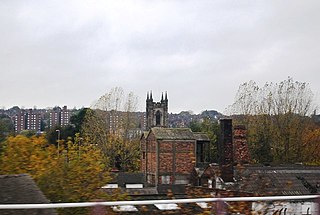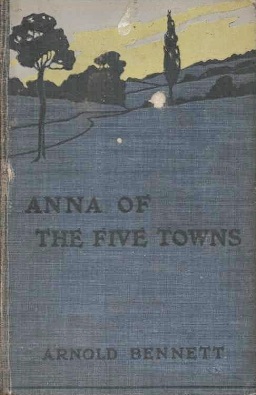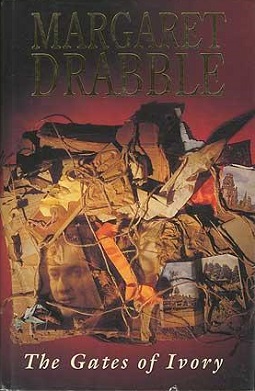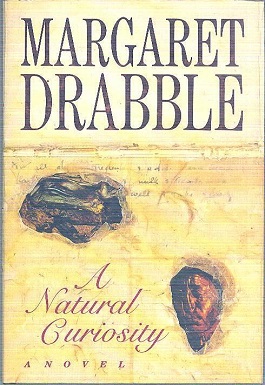
Enoch Arnold Bennett was an English author, best known as a novelist who wrote prolifically. Between the 1890s and the 1930s he completed 34 novels, seven volumes of short stories, 13 plays, and a daily journal totalling more than a million words. He wrote articles and stories for more than 100 newspapers and periodicals, worked in and briefly ran the Ministry of Information in the First World War, and wrote for the cinema in the 1920s. Sales of his books were substantial and he was the most financially successful British author of his day.

A whodunit is a complex plot-driven variety of detective fiction in which the puzzle regarding who committed the crime is the main focus. The reader or viewer is provided with the clues to the case, from which the identity of the perpetrator may be deduced before the story provides the revelation itself at its climax. The investigation is usually conducted by an eccentric, amateur, or semi-professional detective.

Dame Margaret Drabble, Lady Holroyd, is an English biographer, novelist and short story writer.

Stoke-on-Trent is a city and unitary authority area in Staffordshire, England, with an area of 36 square miles (93 km2). In 2021, the city had an estimated population of 258,400. It is the largest settlement in Staffordshire and is surrounded by the towns of Newcastle-under-Lyme, Alsager, Kidsgrove and Biddulph, which form a conurbation around the city.

Newcastle-under-Lyme is a market town and the administrative centre of the Borough of Newcastle-under-Lyme in Staffordshire, England. It is adjacent to the city of Stoke-on-Trent. In 2021 the population was 75,082.

Anna of the Five Towns is a novel by Arnold Bennett, first published in 1902 and one of his best-known works.
John Barrington Wain CBE was an English poet, novelist, and critic, associated with the literary group known as "The Movement". He worked for most of his life as a freelance journalist and author, writing and reviewing for newspapers and the radio.

Fenton is one of the six towns that amalgamated with Hanley, Tunstall, Burslem, Longton and Stoke-upon-Trent to form the county borough of Stoke-on-Trent in 1910, later raised to city status in 1925. Fenton is often referred to as "the Forgotten Town", because it was omitted by local author, Arnold Bennett, from many of his works based in the area, including one of his most famous novels, Anna of the Five Towns.

The Staffordshire Potteries is the industrial area encompassing the six towns Burslem, Fenton, Hanley, Longton, Stoke and Tunstall, which is now the city of Stoke-on-Trent in Staffordshire, England. North Staffordshire became a centre of ceramic production in the early 17th century, due to the local availability of clay, salt, lead and coal.

The Card is a comic novel written by Arnold Bennett in 1911. It was later made into a 1952 movie, starring Alec Guinness and Petula Clark.

Burslem is one of the six towns that along with Hanley, Tunstall, Fenton, Longton and Stoke-upon-Trent form part of the city of Stoke-on-Trent in Staffordshire, England. It is often referred to as the "mother town" of Stoke on Trent. The population of the town was included under the Burslem Central ward and had a population of 6,490 in the 2021 Census.

Longton is one of the six towns which amalgamated to form the county borough of Stoke-on-Trent in 1910, along with Hanley, Tunstall, Fenton, Burslem and Stoke-upon-Trent in Staffordshire, England.
The New Vic Theatre is a purpose-built theatre in the round in Newcastle-under-Lyme, Staffordshire. The theatre opened in 1986, replacing a converted cinema, the Victoria Theatre in Hartshill, Stoke-on-Trent.

The Clayhanger Family is a series of novels by Arnold Bennett, published between 1910 and 1918. Though the series is commonly referred to as a "trilogy", and the first three novels were published in a single volume, as The Clayhanger Family, in 1925, there are actually four books. All four are set in the "Five Towns", Bennett's thinly disguised version of the six towns of the Staffordshire Potteries.

Penkhull is a district of the city of Stoke-on-Trent, Staffordshire, England, part of Penkhull and Stoke electoral ward, and Stoke Central parliamentary constituency.

The Card is a 1952 British comedy film version of the 1911 novel by Arnold Bennett. In America, the film was titled The Promoter. It was adapted by Eric Ambler and directed by Ronald Neame. It stars Alec Guinness, Glynis Johns, Valerie Hobson, and Petula Clark. The film was nominated for the Academy Award for Best Sound.
Frederick Joseph Harvey Darton was an author, publisher, and historian of children's literature. He was best known for his pioneering works in The Story of English Children's Books in England: Five Centuries of Social Life (1932). The Children's Books History Society presented an award in his honour.

The Gates of Ivory is a 1991 novel by novelist Margaret Drabble. The novel is the third in a series of novels, following The Radiant Way and A Natural Curiosity. The novel continues the stories of several middle aged intellectuals introduced in the last two novels. The novel also introduces a new character, Stephen Cox who is loosely based on J.G. Farrell.

A Natural Curiosity is a 1989 novel by Margaret Drabble. The novel is an unintended sequel to Drabble's 1987 novel The Radiant Way, follows the lives of the three protagonist women first introduced in that novel. The novel continues Drabble's interest in exploring the contemporary experience of the British middle class through the eyes of women.















